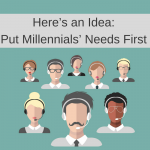How to Hire People that Fit Your Ideal Contact Center Agent Profile

To outside eyes, hiring customer service agents might seem like a straightforward order: hire people who are good at customer service… In fact, careful, nuanced hiring is the foundation of any successful customer support program. If you are engaged with an outsourced contact center partner, you want to have confidence that they are hiring the right person for your specific customer service requirements and ideal contact center agent profile.
Let’s drill down into that concept a little deeper. Consider this: even though both may have excellent customer service skills a great tech support agent does not necessarily share the same predominant traits as a great automotive after-sales support agent. And the high degree of empathy you look for in a health and wellness support agent may actually be an indicator of potential for early burn-out in an emergency roadside assistance agent.
Identifying the right fit for your customer service support requirements is both an art and a science. At Blue Ocean, we begin with the science of neurolinguistic profiling early in the application process and then we apply the art of interview-based recruitment and skills assessment.
What is neurolinguistic profiling? Simply put, humans are hard-wired to process communication signals through multiple “channels.” Each of us has a natural preference in terms of how we best receive and process information. Building a neurolinguistic profile is essentially the science of identifying the four key elements of information processing and identifying their relative application in given scenarios. Each person has a natural profile of characteristics – kinesthetic, auditory, visual, and digital – that can indicate aptitude for supporting various customer process.
Here’s a quick look at contact center agent profile characteristics within the neurolinguistic framework (for more details, please read this post):
1. Visual – How does the individual process visual communication?
A natural preference to process information visually is an asset if you are hiring for a project that requires agents to communicate in visual language or be able to visualize the customer’s end of the conversation. Think of tech support agents troubleshooting equipment they can’t see. They will ask questions like: “What do you see on your screen now?” and they will be saying things like: “I want you to look at the back of your projector and unplug the yellow cable from the port to the left of power button.” They use highly visual language and have to be able to “picture” the customer’s perspective in their own minds. A high V score is also an asset for programs where agents are using tools or systems that are predominantly graphic – for example, mapping tools are essential like in roadside assistance programs or some reservations programs.
2. Kinesthetic – How does an individual interpret information emotionally including through empathy, attunement, and empathic accuracy?
Highly kinesthetic candidates can be well suited to customer service programs requiring the ability to quickly make a connection with a caller. For example, at Blue Ocean we support a world-leader in nutrition and wellness. One of the top call categories is first-time mothers calling for support on infant nutrition. Agents need to be able to treat every new mother with deep empathy for the particular stress, anxiety, and exhaustion that comes with having your first child. Conversely, on emergency roadside assistance programs, a highly kinesthetic individual may find themselves overwhelmed by the constant barrage of highly emotional situations inherent in an industry where “Baby Locked in Car” kinds of emergencies are the top call drivers. Understanding both the emotional needs of your customers and the emotional impact of the work on agents is important in developing the right neurolinguistic agent profile.
3. Auditory – How does the individual process information by listening?
This characteristic is tremendously important in a contact center agent. Although good listeners can be difficult to find, hiring an agent with excellent listening skills nearly guarantees their success in the voice channel. A high A score can indicate strong written communications as well – the focus is on interpreting information through words. So don’t ignore the importance of the Auditory element in off-phone channels such as email, chat, or social media.
4. Digital – Does the candidate naturally prefer a logical process to manage information?
Digital people are systematic and work well with a laid-out process. These digitally-driven agents enjoy solving problems and are primed for navigating complex processes. A higher than average D score is typically an asset in tech support agents or for programs where there are complex risk mitigation processes in place. In our centers, we are looking for a mid to high Digital score in all candidates. Contact center work of all kinds requires strict adherence to process from logging in and managing individual tools and time to following call flow processes.
Scoring Candidates
Each candidate should be given a profile in a database that can categorize his/her answers with a score under the four categories: visual, kinesthetic, auditory, and digital. Our online application process includes a proprietary assessment tool developed over the course of a year by a neurolinguistic practitioner working in close collaboration with our Human Resources and Recruiting teams. That tool allows us to discern a candidate’s natural preferences.
It is important to note that neurolinguistic scoring is just one tool a recruiting team has at their disposal. In our world, it helps in determining whether or not the candidate would excel in supporting our clients’ customers. There are many different approaches to identifying individual strengths and weaknesses. This approach is one that can help skilled recruiters make an early assessment of a candidate’s best fit – an assessment that is tested and validated through the multi-interview process and project specific skills testing.
Benchmarking
Finding the ideal profile for candidates on for your campaign begins with benchmarking to define the ideal profile. When you launch a new program with your outsourced partner, the recruiting team should profile top performing agents, average agents, and underperforming agents in the same role.
Whether you are outsourcing for the first time or moving from an incumbent vendor to a new partner, the benchmarking process is one of the most valuable investments you can make to ensure a smooth program launch and set up your partnership for long-term success. If it is not possible for your new partner’s team of recruiting professionals to interview and profile agents on the job, take the time to provide access to a library of excellent contacts, average contacts, and poor contacts – even if it hurts to revisit the poorly-handled calls. This 360-degree view will provide a benchmark of traits common to both ideal agents as well as common traits of agents who are unlikely to be successful.
Select current groups of agents, segment by type of customer interaction, and compare their scores (against the set of questions explained above) against traditional agent metrics – First Call Resolution, Customer Satisfaction, and Average Handling Times to name a few. Your recruiting team will get a good view of top performers and define the audio, visual, kinesthetic, and digital scores that correlate directly to agent performance.
Knowing the definition of “neurolinguistics” is simply not enough to create a solid neurolinguistic profiling hiring process. Your contact center partner can create a system that efficiently profiles every candidate who applies, and then manage that candidate through the hiring process efficiently and effectively to man your frontline customer service lines with agents are best suited to deliver on your brand promise.




